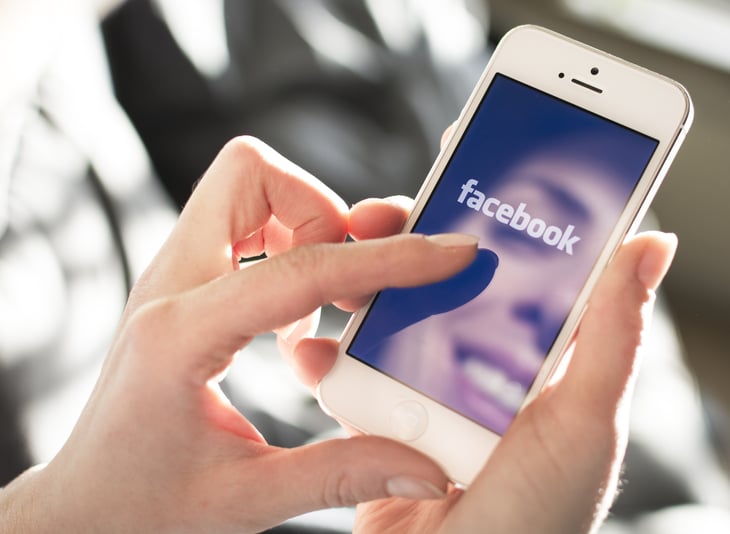
Every generation has its own needs and habits. That often means ingrained traditions from their elders fall by the wayside.
I’ve never owned a buggy whip or Victrola. An entire generation has grown up without landline phones or VCRs. My daughter, born in 2007, only touched a typewriter back when her pediatrician set some out in the waiting room for curious young patients to hammer on.
There’s some sadness in these losses for those of us with fond memories of soon-to-be obsolete things. My daughter will never know the joy of carefully creating a mixtape for a friend or crush. But the future always fills in the gaps — she’s perfectly capable of assembling a Spotify or other online-service playlist and is technologically smart enough to share it with friends.
We’ve looked before at things the millennial generation has been accused of killing off, from napkins to golf, and now it’s time to do the same with Generation Z.
Who is Generation Z?

Millennials, born between 1981 and 1996, according to the Pew Research Center, are in their 20s, 30s and 40s now, and Generation Z is on the rise. Generation Z members were born between 1997 and 2012, so some of them are still in grade school while others are in their mid-20s.
It’s never fair to completely blame a generation for societal change. But it’s also enlightening to look at the trends and traditions that once seemed permanent, but now are changing and even slipping away. Here are some once-familiar things that are going by the wayside with Generation Z.
1. Cursive

Are we about to write off the swirly, elegant skill of cursive handwriting?
In 2010, cursive writing was omitted from the new national Common Core standards for K-12 education, and that change has made a difference.
Former Harvard University President Drew Gilpin Faust wrote in The Atlantic about how few of her students write or read cursive, noting that this will hamper their research skills as so many important older documents are in cursive.
“In the future, cursive will have to be taught to scholars the way Elizabethan secretary hand or paleography is today,” she wrote.
2. Early driving

For many members of older generations, turning 16 and getting one’s driver’s license was a huge event. But that goal isn’t really driving Gen Z.
Data out of the UK, for example, shows that the number of young adults aged 17 to 20 with driver’s licenses has fallen by 40% since the 1990s. Consulting firm Frost & Sullivan credits changing driving habits to a range of factors, including the price of cars, starting families later in life, and the emergence of shared and public transport options in many areas.
3. Printers and copiers

Home printers seemed like godsends for many older Americans — you could print a map, a recipe, a news article, all without using a giant work printer or going to a copy shop. But Gen Z hasn’t had a lot of experience with the clunky hardware, The Guardian reports.
Sure, they can edit a TikTok video on the fly or add a kitten-face filter to an iPhone photo. But freeing a paper jam, setting up a document to be collated, even printing a double-sided contract? If you have to haul out an instruction book to figure it out, Gen Z just isn’t that interested.
4. Office life

When the COVID-19 pandemic hit, many workplaces and schools scrambled to move their employees and students to remote work and study. So it’s no surprise that some members of Gen Z got used to working from home.
Still, a recent survey showed some contrasting results. Gen Z had the lowest number of members saying they wanted to work remotely, perhaps indicating that they’re eager to experience some of the community spirit found in an office or on campus. But at the same time, the survey found 27% of Gen Z respondents see working from home as an absolute necessity, more than any other generation.
Of course, for those who do want to go to the office, there is always a chance no one will be there when they arrive.
5. Facebook

Facebook requires users to be at least 13, but today’s youths aren’t all hitting “like” on Mark Zuckerberg’s social media platform. A recent study shows that less than 4% of users are aged between 13 and 17. YouTube, Instagram, TikTok and Snapchat all rank higher with Gen Z social-media users than Facebook.
6. Mental health stigmas

Gen Z members are stressed and pressured in many ways, but as a generation, they’re aware of the importance of openness about mental health concerns.
An American Psychological Association study shows that more than nine in 10 Gen Z adults — 91% — have experienced at least one physical or emotional symptom due to stress. But this generation is also more willing to discuss their mental health openly, with many creating memes and videos on social media about this once-taboo issue.
7. Drinking alcohol

Not all members of Generation Z are even of legal drinking age yet. But numerous studies show that alcohol isn’t as big a part of their lives as it may have been for their elders.
The BBC notes a decline in youth drinking in Europe, the U.S., Australia and New Zealand. A report shows that Gen Z drinks 20% less alcohol per capita than millennials. One researcher notes that other risky practices, including drug use and unprotected sex, are also going down among this generation, perhaps because knowledge of the health risks of such practices are more well-known than they once were.
8. A 4-year degree

Most current college students are from Gen Z. But they’re approaching post-secondary education in a different way. Compared to millennials, more Gen Z students are looking at career-based programs and other less traditional options, studies show.
The number of high school students considering a four-year degree program dropped 20% from May 2020 to January 2022, according to a report from ECMC Group, a nonprofit focused on promoting post-secondary education options. Half of students surveyed by the organization believe they can be successful without a four-year degree.
9. Attending prom with a date

The traditional school prom involved mostly romantic couples – see 1986’s “Pretty in Pink” for a big-screen example. But Gen Z students aren’t always into the drama that comes along with pairing off.
One survey reports 57% of high schoolers would rather attend prom with friends as opposed to one significant other. This would have made Molly Ringwald’s life much easier in the movie.
10. Side parts

Do you part your hair on the side? You’re likely not part of Gen Z, then. Numerous publications have reported on how Generation Z members declare that the middle part is the only way to go, while side parts label the wearer as “old.” No one tell them that Marcia Brady, a true icon of the baby boom, rocked a middle part like nobody’s business. Marcia, Marcia, Marcia!





Add a Comment
Our Policy: We welcome relevant and respectful comments in order to foster healthy and informative discussions. All other comments may be removed. Comments with links are automatically held for moderation.